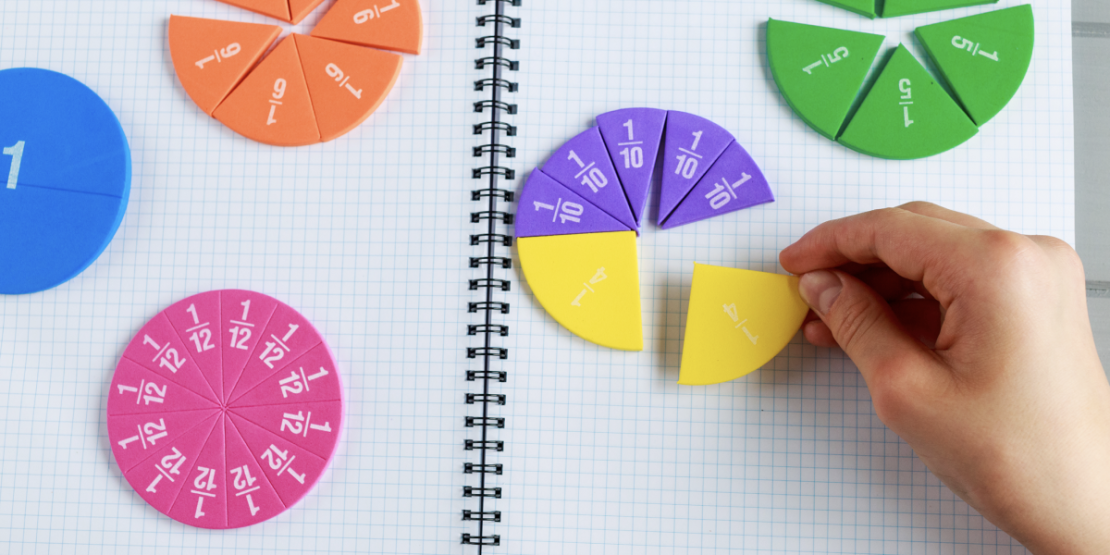
Our guest blog post is written by educator April Brown and shares ways to boost your child’s math success.
Ask your friends and family to share their favorite subject from school. Most likely, only a few of them will say math class. As an educator, you can almost feel the fear when you ask students to break open their math books. Why do so many of us experience anxiety and negative emotions when thinking about math?
Jo Boaler, professor of mathematics education at Stanford Graduate School of Education, says in Stanford News, “All children are different in their mathematical thinking, strengths, and interests.” Stepping away from the usual focus of rote memorization and multiple choice questions by creating open-ended and meaningful lessons can make math accessible to all learners.
Combine PBL and STEAM
Integrate science, technology, engineering, and art in your mathematics lessons. Take it a step further and incorporate project-based learning by asking students to solve real-life problems. Initiate a project that combines student interest with content area standards. For example, if students have been complaining about the playground, challenge them to design a new playground.
- Put the students in small groups and ask them to figure out the area and perimeter of a new play structure.
- Use questions to guide your students to think deep. Great examples include: Where would the structure fit? What would make the structure more engaging? How can we ensure the structure is accessible for all students to use?
- Allow time for students to map a plan, calculate costs, and think of innovative ways to use recycled materials.
- Meet with a local architect for inspiration and feedback.
- Set up a time for the students to present their plans to your school’s PTO and principal.
Think big picture
Make math relevant and engaging for all learners. Instead of isolating math, use authentic teaching practices to help students understand difficult concepts.
- Explain why. When you introduce your students to a new concept such as addition, subtraction, multiplication, or division, explain why the concept is important. Some questions for students to think about include: When will you use these math skills in the real world? Have you ever seen your parents using these math skills? What would happen if you didn’t know how to add/subtract? What are some situations when you would benefit from knowing this math concept? How can mastering multiplication make your life easier? Create a bulletin board in your classroom with the heading, “Why Math is Important.” Post student ideas on the board.
- Expose students to careers in STEAM. Bring in guest speakers that work in science, technology, engineering, art, and mathematics-related fields. Ask them to talk about their careers and explain to the students why it’s important to master foundational math skills. Further engage students by organizing a STEAM Career Day. During the career day, set up short presentations and workshops for students. Some career ideas include architects, computer specialists, software designers, environmental engineers, chemists, forensic science investigators, doctors, and nurses.
Use math journaling
Put the textbook aside and give students ownership by creating individual math journals. Here are some tips to help you get started.
- Use math journals during centers. Instead of asking students to turn in separate pieces of paper during learning centers, have the students record their answers in their math journals. Holding students accountable for their journals will help them develop organizational skills and allow you to give feedback they can refer to in the future.
- Start a story problem of the day. For example: Charlie saw 7 toucans sitting on a palm tree. Three toucans joined. One toucan flew away. How many toucans are left? Encourage students to focus on the process by asking them to draw a number line, choose the operation, circle important words, create a picture that shows what is happening in the problem, and write a number sentence to go along with the problem.
- Use student journals as a place to document learning. Do you have parent-teacher conferences coming up? Refer to the student journals to show examples of what your students are learning, mastering, and working towards.
- Include learning goals. Create learning goals that students can paste in their journals. If you are teaching students about place value, your learning goal for the day may be: I can show you that the numbers 11–19 are composed of a ten and some ones. First, the students can glue in the learning goal. Next, have the students compose numbers 11–19 with place value blocks and draw a picture in their journals. Including learning goals with lessons makes it very easy for teachers, students, and parents to refer back to standards covered and check on student progress.
Instill a growth mindset
Carol S. Dweck, Ph.D., is one of the world’s leading researchers in the field of motivation. Her interest lies in growth mindset and the idea that we can grow our brain’s capacity to learn no matter what age we are. Here are some ways you can instill a growth mindset in your students.
- Teach about neuroplasticity. Teach your students about their brain. The field of neuroplasticity is constantly evolving and reinforcing the idea that we can change our brains for the better. When students see for themselves that their brain changes during learning, they gain the confidence needed to persist during difficult learning experiences. Combine lessons on neuroplasticity with metacognitive strategies to teach students about how they learn best.
- Role play. Make mistakes (on purpose) and use them as teachable moments. You might say: “Oh, I didn’t solve the subtraction problem correctly. Let me go back and try again. I know I can do this. I just need to continue on. What tools can I use?” Create simple scenarios on laminated note cards and pull them out at the end of the day during circle time. Example scenario: Tommy is trying to solve a story problem challenge and he doesn’t know what to do. What would a fixed mindset response be? A growth mindset response? How are the two responses different?
- Provide examples/non-examples. Create a t-chart on a large piece of paper. On top of one column write growth mindset and on the other write fixed mindset. When you notice your students displaying a growth mindset, jot down what the student was doing. For example, Layla was nervous about taking her math test, and almost gave up, but instead she took her time, used her tools, and explained how she got to her answers. When you record the situation on the chart, offer students the opportunity to think of what a fixed mindset would look like in the same situation. Write student ideas in the fixed mindset column. Having a visual to refer to will help your students understand what a growth mindset looks like in and out of the classroom.
By incorporating these authentic learning opportunities, not only will you reach more learners, but you will also change your student’s perception about math and help your students develop dispositions such as curiosity, flexibility, and diligence.
For more teaching resources, check out Education.com.
April Brown is an innovative educator with a background in Special Education and Psychology, and over ten years of diverse teaching experience spanning three countries. April encourages her students to become healthy, environmentally-aware citizens and make a difference in the world through student-led inquiry, art, theater, and nature exploration. Check out her website for more of her ideas.



